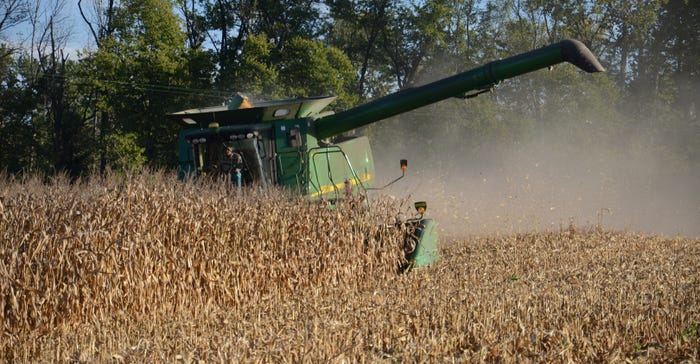February 26, 2019

It’s a well-known fact that corn is one of the most efficient crop plants for converting nutrients, water and sunlight into carbohydrates, oils and proteins. From emergence to full maturity, each corn plant constantly adjusts to maximize the number, size and weight of each kernel it produces. It’s limited by its genetics and the environment in which it grows.
In Corn Watch plots during the last few years, we’ve studied the effects of early planting, replanting, double planting, overplanting, and low, optimum and high populations. We’ve observed the influence of cloudy weather, too much rain, sunny weather, and low and high temperatures. We’ve studied the impact of hail damage, nitrogen burn and herbicide injury. We’ve also observed the effects of too much space vs. crowded conditions, soil compaction and soil erosion on plant growth and, ultimately, ear size and yield.
We’ve studied the impacts of leaf and stalk rot pathogens and the effectiveness of foliar fungicides and their application timing.
We’ve seen spindly, little corn plants that looked like grass due to extreme population pressures producing little bitty ears with a few silks and a little tassel branch trying its best to produce a few kernels in a struggle to survive and produce a progeny.
On the other hand, we’ve observed plants in border rows with ample space, nutrients and sunshine producing multiple ears on the main stalks and on tillers. One plant produced several tillers and 11 ears to maximize number of kernels to its capacity.
Maximum progeny
In every situation, we saw that each plant was adjusted to its microenvironment with a single purpose: Produce as many progeny as possible under the circumstances.
Plants constantly adjust as the environment changes. There are five distinct stages when the corn plant determines what it can do. These stages are limited by genetic potential of the hybrid, but the plant can make modifications based on the environment available at that time.
Realize that at each stage, plants try to maximize number of viable kernels. From emergence to V10 leaf stage, it takes 85 to 90 growing degree days for each leaf added. After the V10 stage, corn picks up speed and adds a new leaf every 50 to 60 GDDs. At this stage, corn grows so fast you can almost see it! Corn needs special attention during critical stages. Pollination is the next most critical stage. Make sure insects such as Japanese beetles and western corn rootworm beetles are not clipping the silks. Use insecticides, if needed, to control these pests.
Key decision points
When does corn make critical decisions that determine the components of yield?
• Knee-high. At knee high, the corn plant decides how many potential ears it can develop. A prolific hybrid can produce several ears on the main stalk — potentially an ear at each node below the top ear. If there is competition either from weeds or other corn plants, it may decide to try to produce only one good ear.
• Waist-high. At waist high, the corn plant is already deciding how many rows of kernels it can put on. Row numbers are always in pairs and primarily controlled by the hybrid genetics. Yet environment such as population, water and nutrient availability, heat, and drought can influence it. Depending on the conditions, a couple of rows may be added or subtracted from the genetic potential of the hybrid.
• Pollination. During the pollination stage, the corn plant determines how many kernels it can grow per ear. If it has plenty of nutrients and water, it may extend ear length. Hybrids with this characteristic are called flex hybrids.
During my corn breeding days, I developed a couple of widely grown hybrids that combined the genetic qualities of both girthy and flex-eared hybrids. This is a rare combination and requires extensive research and testing. Individual plants can increase the number of kernels at the ear tip at pollination if all signals are a go. More often, if it’s too hot or dry, expect to find aborted kernels at the ear tips.
• Early grain fill. After pollination is complete, corn plants can add kernel depth depending on genetic potential. Cooler nights, adequate water and nutrients, sunlight, and good disease tolerance or stay-green power help increase kernel depth and yield. However, if adequate nutrients aren’t available in the soil, the plant can decide to start taking nutrients from leaves and stalks to nourish the kernels. It doesn’t like to produce runts. Depth of kernels is determined during the grain-fill period. If disease such as gray leaf spot is rampant, the plant may pull back on kernel size.
• Late grain fill. During the final stage, corn plants add test weight to kernels if the going is good and plants are healthy and not being attacked by diseases or insects. Test weight is somewhat determined in August. Test weight is also tied to genetics. Cooler nights help improve test weight. However, if the environment is warm and dry, test weight could be lower.
Nanda is director of genetics for Seed Genetics-Direct, Jeffersonville, Ohio. Email him at [email protected] or call 317-910-9876.
About the Author(s)
You May Also Like






